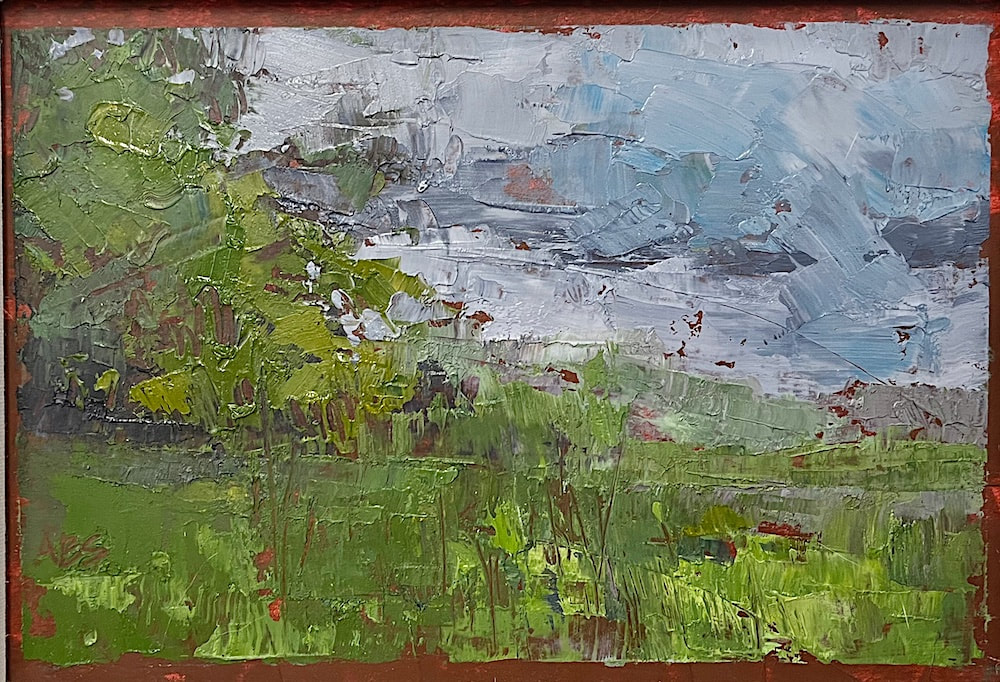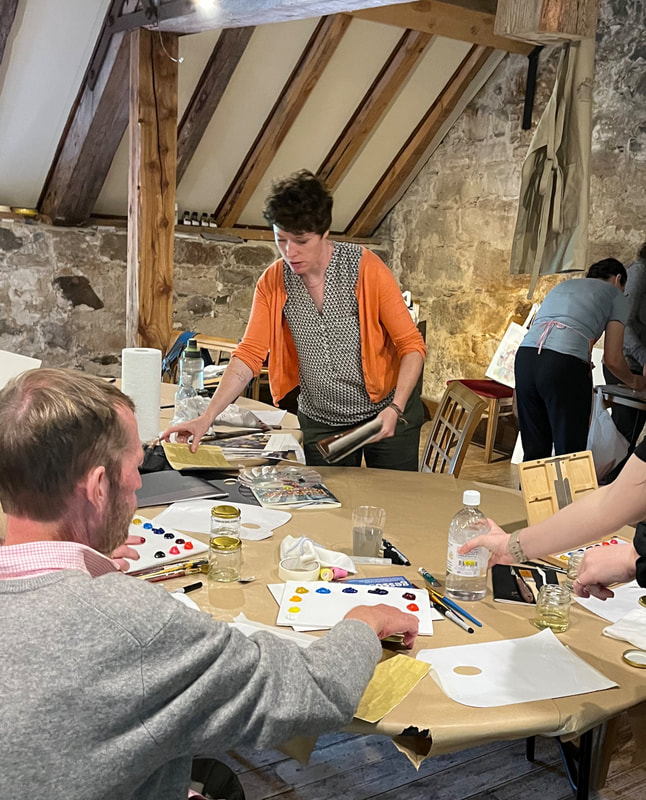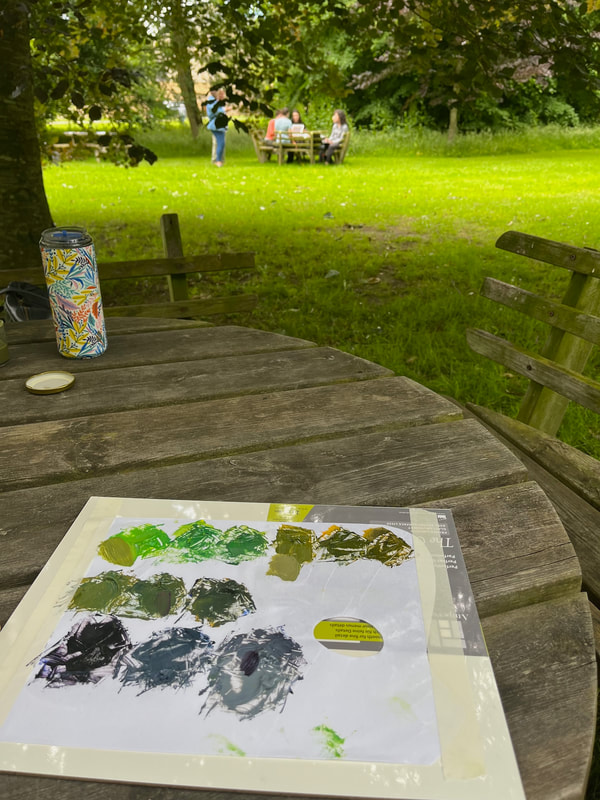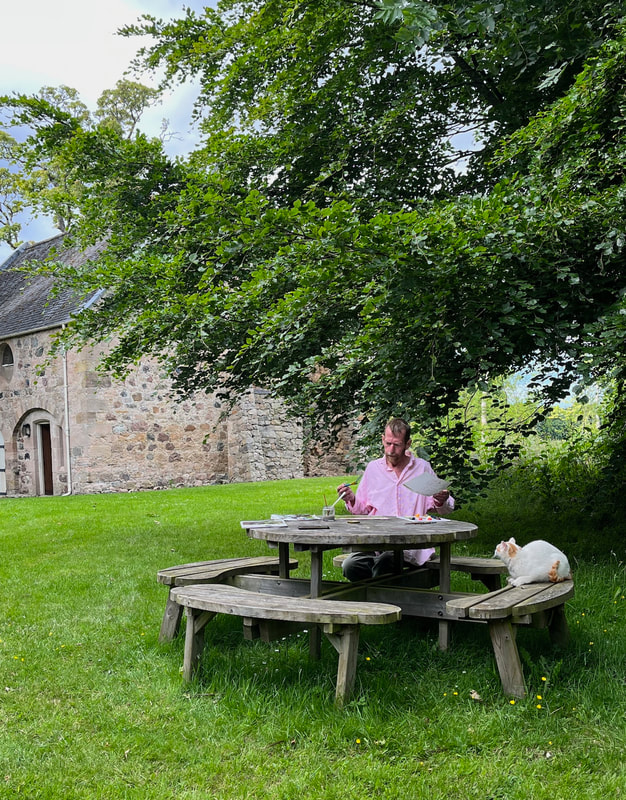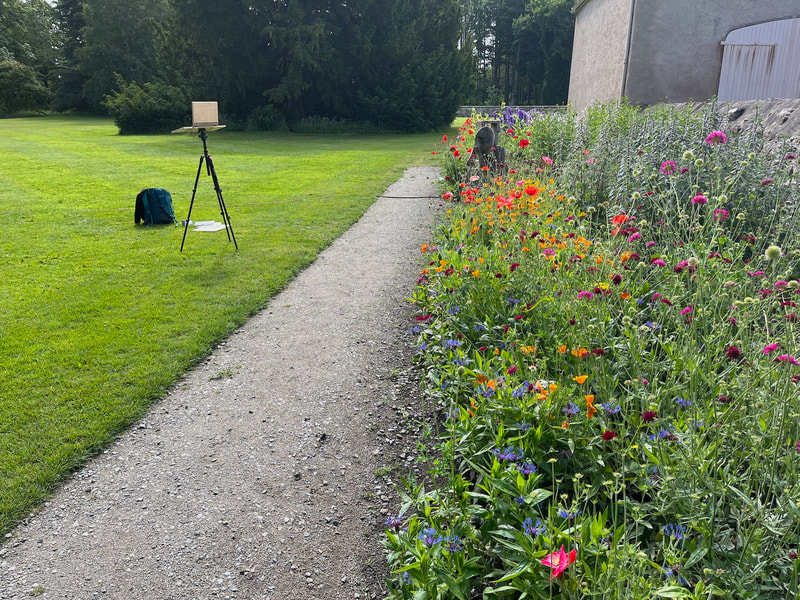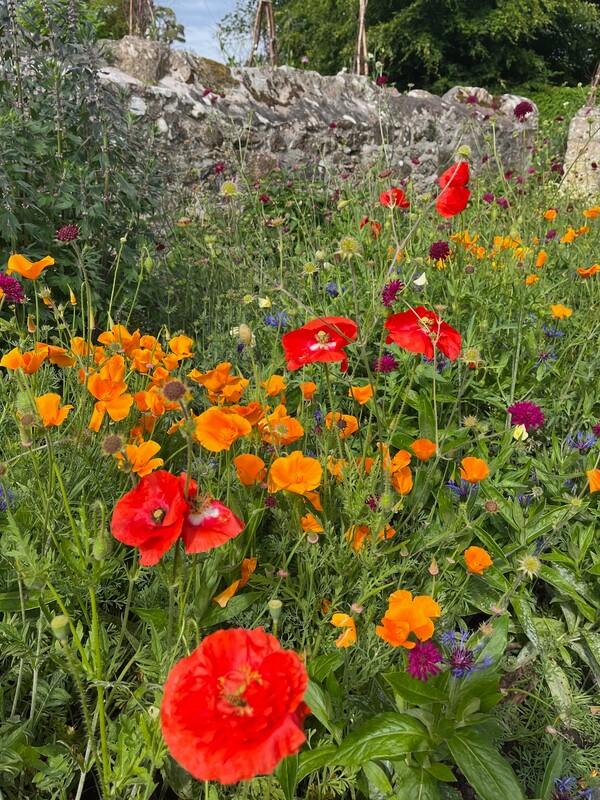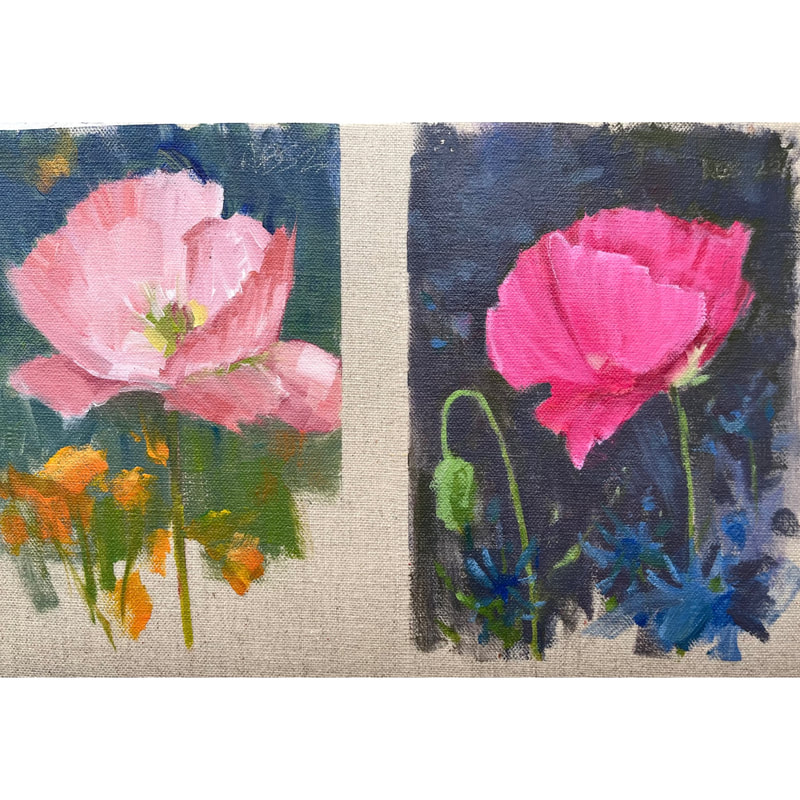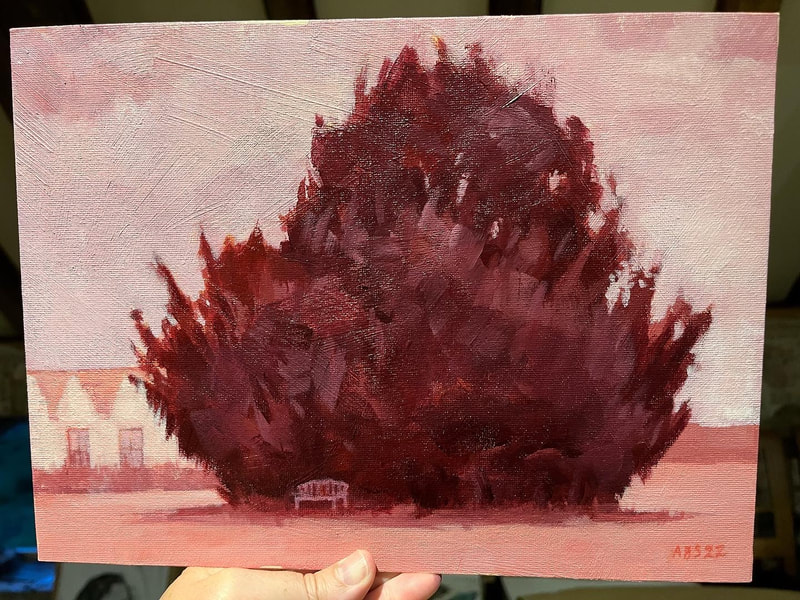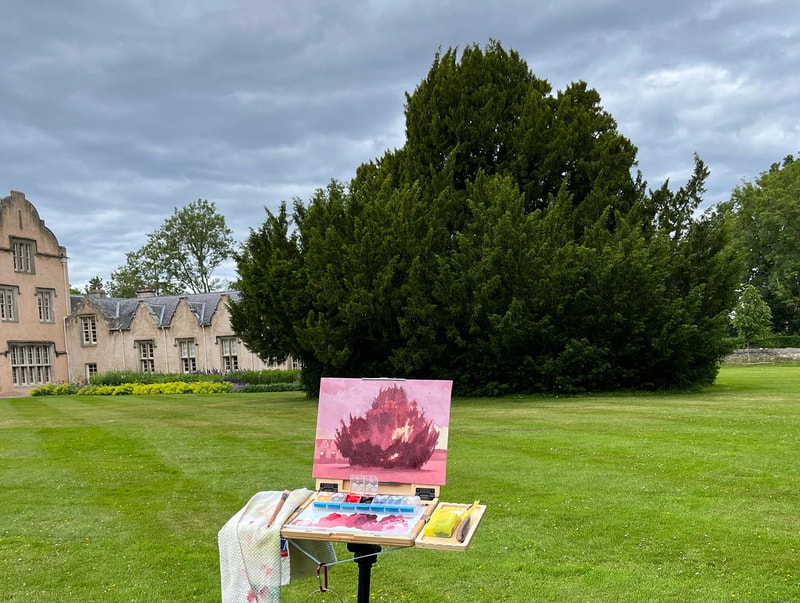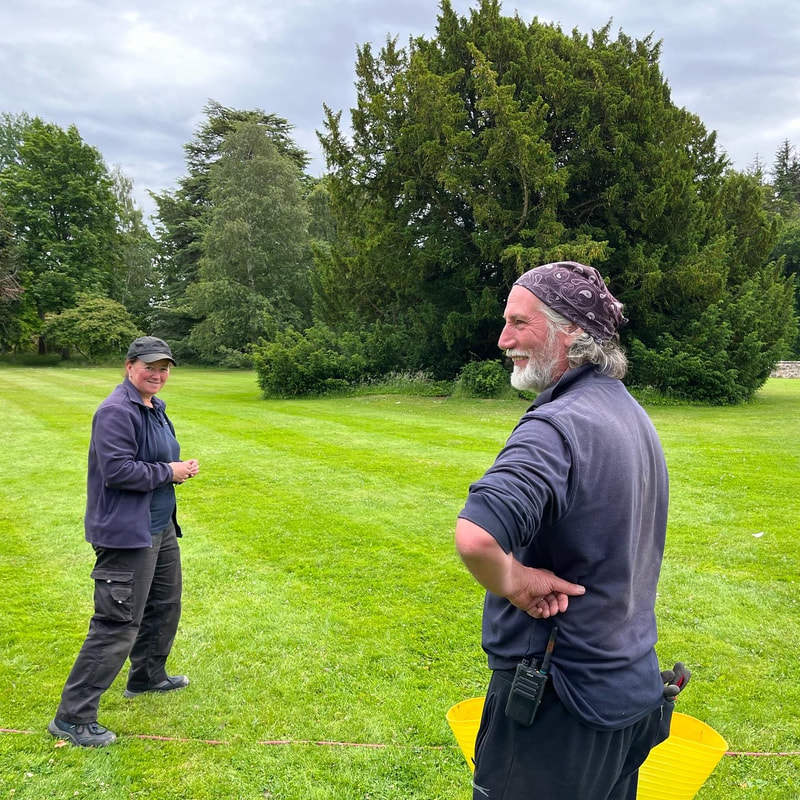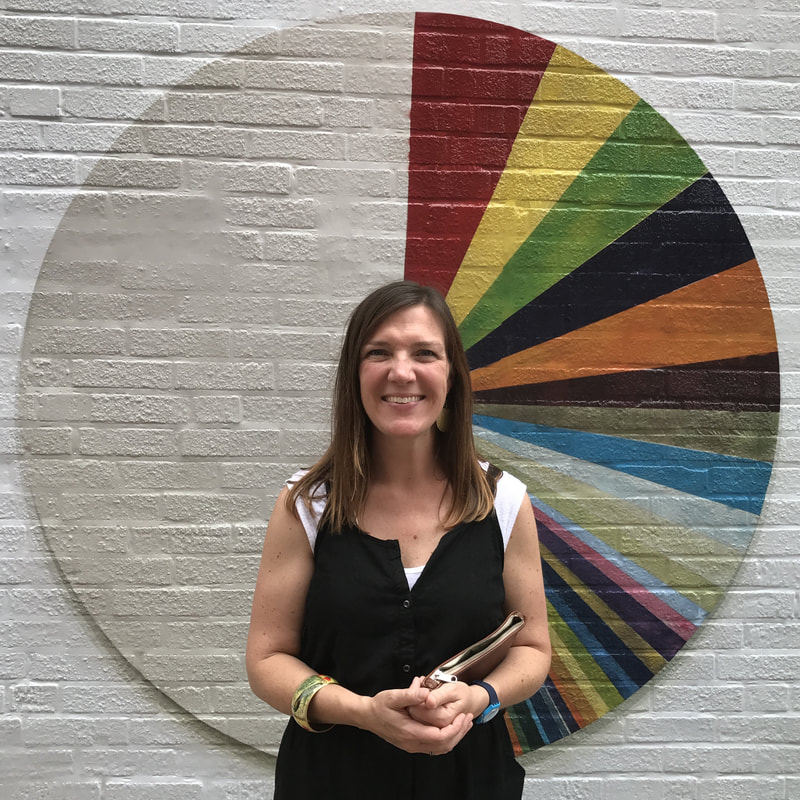|
The trip included talks and demonstrations from three local-ish painters. I'm so glad the first one was Ginny Elston, who gave us a workshop on greens. Summer in the Scottish countryside is incredibly green, and her lesson was just what we all needed at the start of our trip.
After an indoor lesson in mixing greens with various yellows, blues, and purples, we sat outside to make some little paintings on scraps of primed paper she had prepared for us. Mine is covered in burnt sienna, which is such a pretty warm complement to my cool greens (and blues).
0 Comments
I didn’t know that a cottage garden is a defined thing until I was at Brodie, where an old stone wall is the backdrop for one. Its wildness is just on the right edge of crazy. I was immediately hypnotized by it. As always when I learn something new, I dig a little deeper, and I collected a bunch of the dual descriptions I read about cottage gardens because they’re always described with two:
This is my first painting in Scotland. The tree is enormous, which I showed by including the little bench in front of it and a small portion of the castle. At first, I thought it was a clump of trees, but when I walked around it, I saw a well-worn entrance through its long, shaggy branches. That’s when I saw it is one massive tree whose branches hang down like thick tentacles creating a tall and wide canopy cooler than any treehouse I’ve been in. (As I entered I said hello to a local couple, and—upon hearing my foreign accent?—they told me to look out for changelings.)
At the end of my trip I was thrilled to finally run into the gardeners (Yvonne and Christopher pictured) at Brodie, and they told me that the tree is a yew and it predates the castle. That’s more than 600 years old! Yews are known for their longevity because those hanging branches can reroot and form new trunks. AAAAND, I learned that Scotland’s--and perhaps Europe’s--oldest tree is a yew estimated to be 2,000-5,000 years old. Isn’t old stuff great? Now, why is this painting magenta? It is a value study using only white, cadmium red, and quinacridone magenta |
I Heart Art
I do! I make it, sell it, think about it, look at it, read about it, and (sometimes) I write about it. Join my mailing list, and you'll receive my brief--promise--messages about new work, shows, events, and a little inspiration. Probably a picture of my dog, too. Archives
April 2023
|
|
|
© Amanda Brodie Stenlund Fine Art, LLC
Proudly powered by Weebly
|

